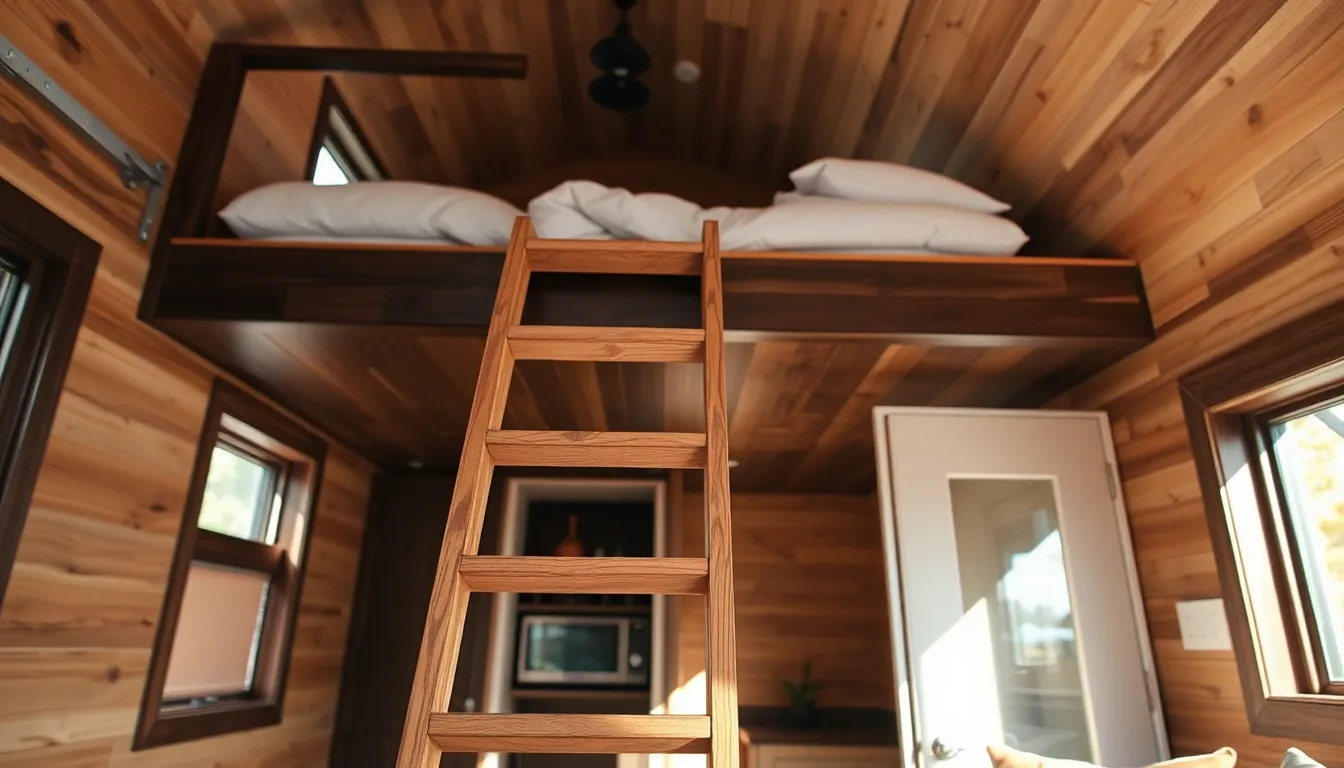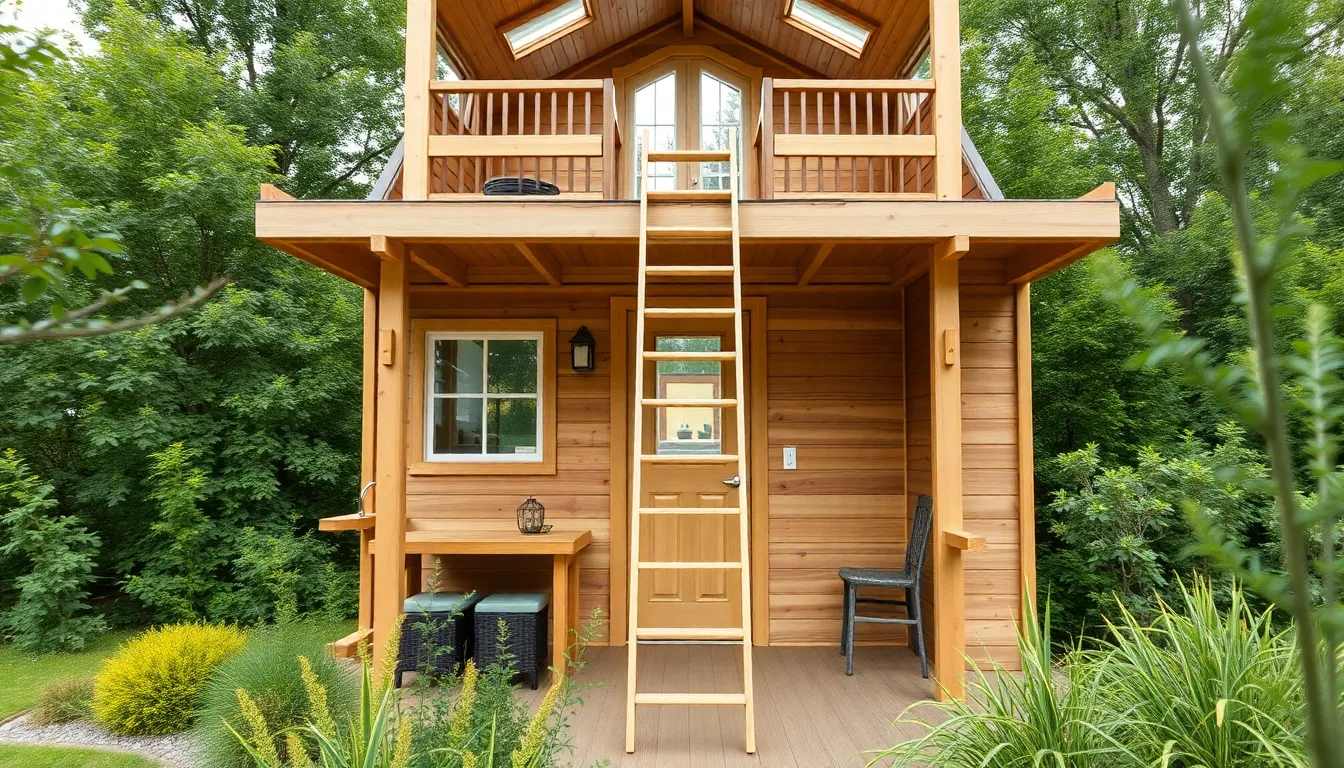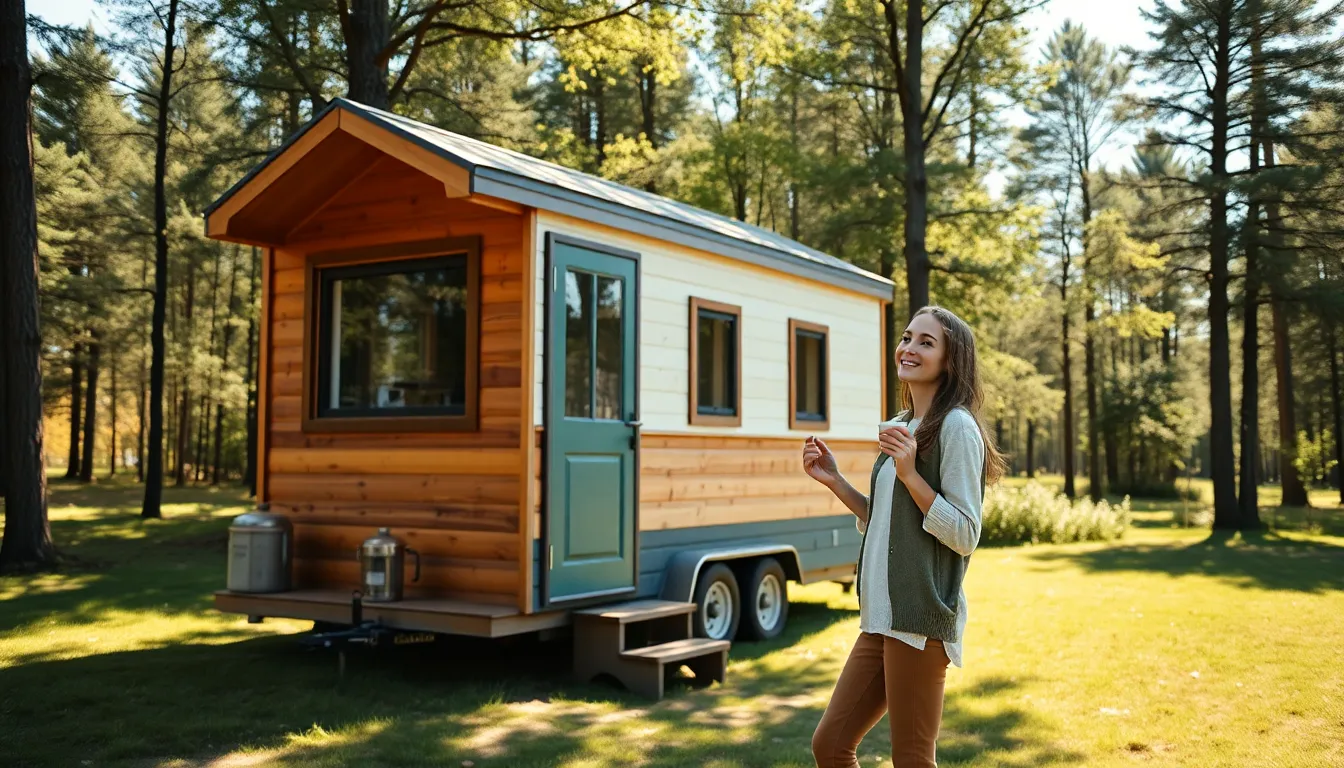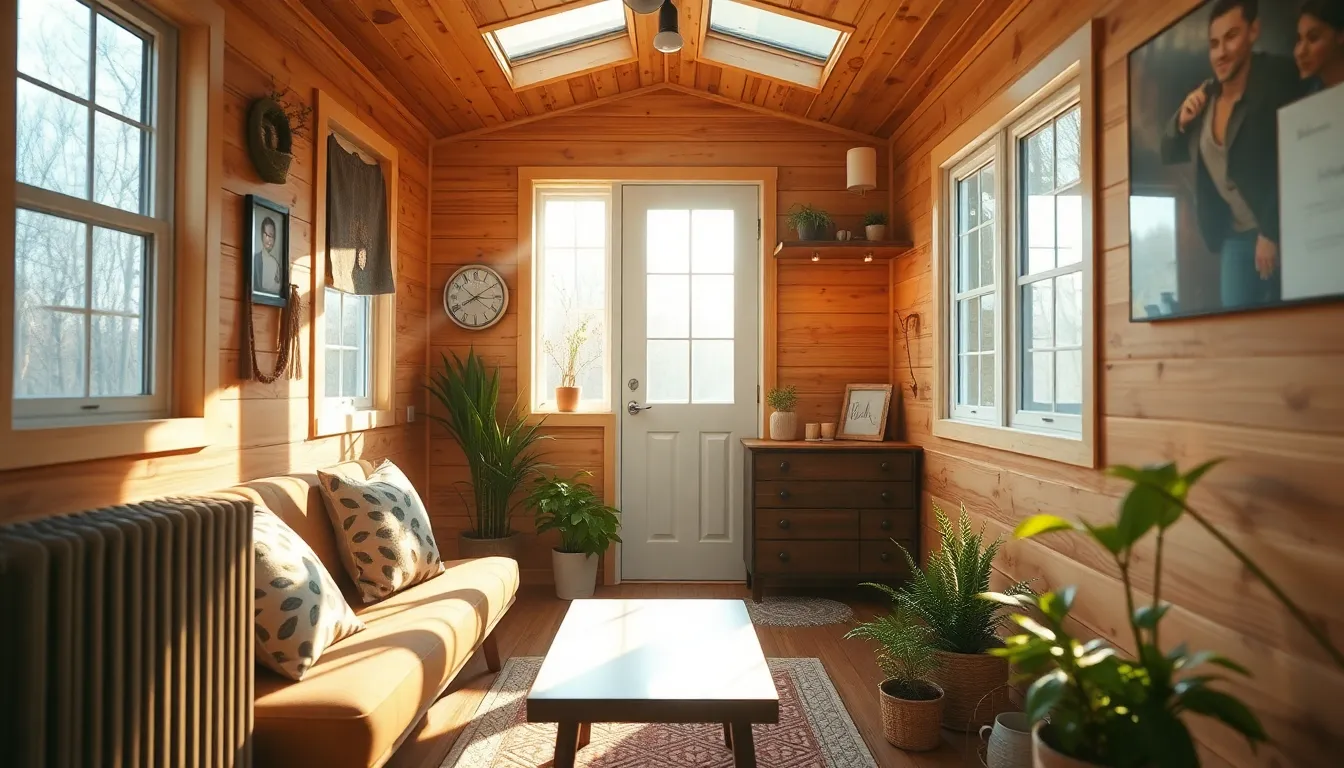In a world where bigger isn’t always better, tiny homes are stealing the spotlight. But let’s be real: how do you reach that cozy loft without a trusty ladder? Enter the tiny home ladder—the unsung hero of vertical living. It’s not just a ladder; it’s a ticket to your elevated sanctuary, where dreams of minimalist living come true.
Table of Contents
ToggleOverview of Tiny Home Ladders
Tiny home ladders play a crucial role in maximizing space and enhancing accessibility. These ladders facilitate movement within compact living areas, making them indispensable for residents.
Importance of Ladders in Tiny Homes
Ladders provide access to lofted sleeping areas and storage spaces. Without them, navigating these elevated sections becomes difficult. Safety is also a priority; sturdy ladders minimize the risk of slips or falls. Moreover, ladders serve as multifunctional furniture, often doubling as decorative elements. Maintaining a minimalist aesthetic is essential in tiny homes, and ladders satisfy this need while enhancing functionality.
Types of Tiny Home Ladders
Several types of ladders suit tiny home designs. Straight ladders offer a simple, classic option, effectively saving space. Folding ladders allow for easy storage and provide versatility. Spiral ladders add a unique design element, often becoming conversation starters. Slide-away ladders combine functionality with safety, retracting when not in use. Each type caters to different preferences and space requirements, ensuring a functional solution for every tiny home.
Features to Consider
Tiny home ladders come with specific features that enhance functionality and safety. Consider the following aspects when selecting the ideal ladder for a tiny home.
Material Options
Ladders often use materials like wood, aluminum, or fiberglass. Wood provides a warm aesthetic, complementing the minimalist design of tiny homes. Aluminum offers lightweight durability, making it easier to move and store. Fiberglass ensures safety since it doesn’t conduct electricity. A combination of materials may also suit individual preferences, helping achieve both functionality and style.
Weight Capacity
Pay attention to the weight capacity of ladders, as this affects their safety and usability. Most ladders accommodate at least 250 pounds, supporting regular use without compromising stability. Higher capacity options exist, suitable for heavier loads or multiple users. Assessing this feature ensures that the ladder meets the needs of everyone in the home.
Design and Style
Aesthetics play a vital role in tiny home design, and ladders vary in style to fit different themes. Straight ladders provide a minimalist look, often blending seamlessly with surrounding decor. Folding ladders offer space-saving benefits, easily tucking away when not in use. Spiral designs add a unique charm, enhancing vertical space while contributing to visual interest. Select a ladder that aligns with the overall aesthetic and functional needs of the tiny home.
Popular Tiny Home Ladder Brands
Several brands excel in crafting ladders suitable for tiny homes. These manufacturers focus on quality, safety, and design, ensuring each ladder meets unique needs.
Brand 1: Overview and Features
Laddercraft is known for its sturdy wooden ladders. These products feature a sleek design that complements various home aesthetics. Weight capacities often exceed 300 pounds, providing ample support. Each ladder comes with anti-slip rungs, enhancing safety during use. Additionally, customers appreciate the eco-friendly materials used in construction. Options include customizable heights, making them versatile for different loft configurations.
Brand 2: Overview and Features
Tiny Steps offers a range of aluminum ladders known for their lightweight build and durability. Each ladder features a powder-coated finish, protecting against scratches and wear. Most designs incorporate a foldable option, allowing for easy storage when not in use. Weight capacity typically reaches 250 pounds, ensuring safety for most users. Customers praise the modern look, fitting well within minimalist interiors. Various colors provide choices that enhance personalization in tiny home designs.
Installation and Safety Tips
Achieving proper installation of tiny home ladders ensures safety and effectiveness. Start by selecting a stable location free from obstructions. Assess the angle; a 75-degree angle often provides optimal stability and comfort. Use a level to verify straightness during installation. Secure the ladder firmly at the base to prevent movement when in use. Consider anchors for added stability if the ladder goes against the wall.
Safety involves following essential precautions. Always check ladder weight capacity before use; most options support at least 250 pounds. Ensure that rungs are free from debris or moisture to avoid slips. Utilize ladders with anti-slip features, particularly in high-traffic areas. Make it a routine to inspect the ladder regularly for wear and tear. If possible, use it with a spotter, especially when navigating higher spaces.
Conclusion
Tiny home ladders are more than just practical tools; they embody the essence of efficient living in compact spaces. By choosing the right ladder, individuals can enhance both functionality and aesthetic appeal in their tiny homes. Whether opting for a stylish wooden design or a sleek aluminum option, the right ladder can significantly improve accessibility and safety.
Prioritizing safety features and proper installation ensures that these ladders serve their purpose effectively. As tiny living continues to gain traction, the importance of thoughtfully designed ladders will only grow, making them indispensable for those embracing a minimalist lifestyle. With the right ladder, tiny home dwellers can maximize their space while enjoying the comforts of elevated living.









